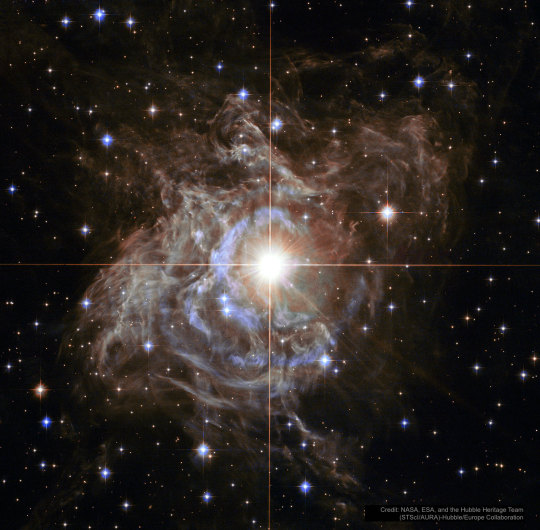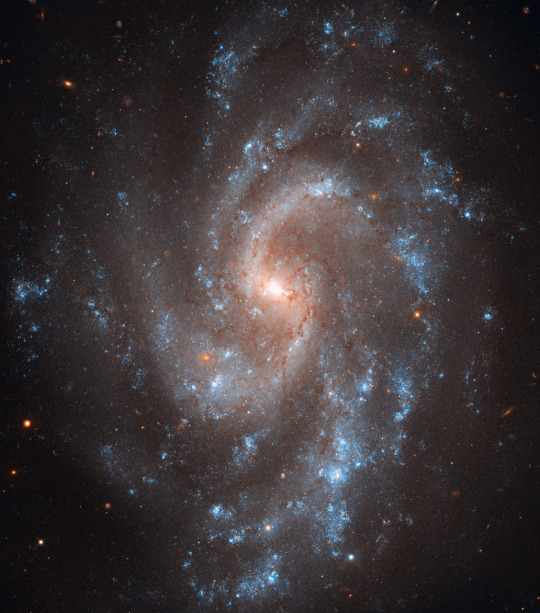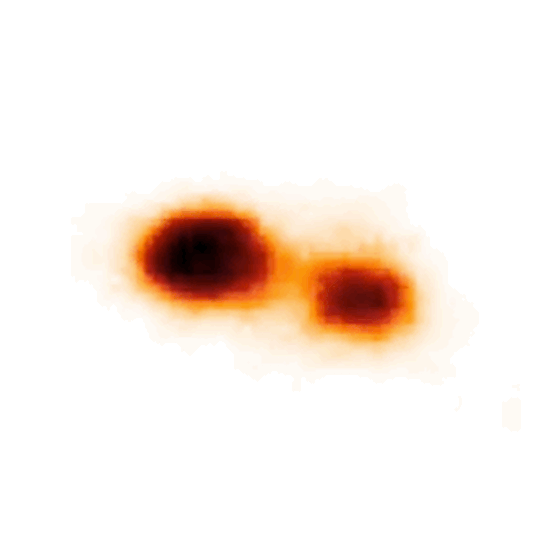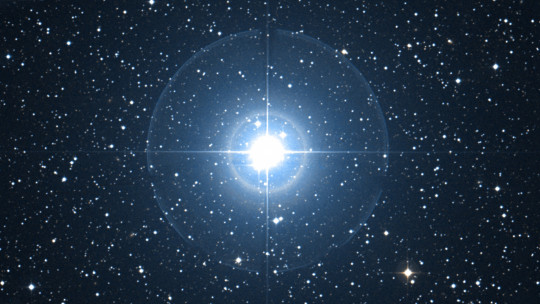#variables in space
Explore tagged Tumblr posts
Text

A Cepheid variable © Hubble
#stars#space#astrophotography#cepheid variable stars#planet#solar system#galaxy#universe#cosmos#astronomy#nasa#night sky
1K notes
·
View notes
Text

Some stars pulse, becoming brighter and and dimmer. A certain type, known as Cepheid variable stars, brighten and dim on regular schedules. This spiral galaxy, NGC 5584, contains over 600 of them. They’re useful for studying great distances in space. Credit: Hubble/NASA, ESA.
#space#astronomy#stsci#science#nasa#universe#hubble#hubble space telescope#hubble telescope#esa#galaxy#cephid variables
172 notes
·
View notes
Text

My Xeno-reaching brain when I see any concept anytime.
It always comes back to Xeno. (Whether I mean it to or not.)
#that castle was forged from his mind: wow... that's like a subconscious domain :D#they can appear from a normally-invisible plane and fuse with things/people: wow... that's like a gnosis :D#that's called the variable weapons system?: wow... that's like the m.w.s. :D#an elysium in space: wow........that's not saga but it's xeno so I'm still gonna say it :D#this happens more often than you think so I wanted to make an accurate image of that portion of my brain#Mew's Art#xenosaga#shion uzuki#and of course there is specifically a tiny shion in the brain
112 notes
·
View notes
Text

Seeing Venus 'for reference' in the list of possibly habitable exoplanets is so humbling. It's a reminder that "yes, this planet might be an analogue of Earth, or Literal Hell, so don't get too excited just yet"
#cosas mias#astronomy#astrobiology#I've read in Rare Earth and elsewhere that the conditions near a star during formation are highly variable#that's why our inner planets are so different from each other#there must be WILDLY different kinds of planets out there and I can't wait when we truly start to see them#space#the notes are also fun 'this planet might not exist actually'
86 notes
·
View notes
Text
coding the webcomic site has me going ouhhhh i wanna make a neocities site.... just for meee...... would be so neat... spritzing myself with the naughty cat spray bottle NO NO YOU DONT YOU WANNA DRAW COMIC PAGES
#i really hope my allergies fade soon its been especially hard to draw these last few weeks#& we're too strapped to consistently afford my energy drinks so ive just been so soso sleepy#very much easier to copy and paste gifs on my puter than to think about composition and dialogue and so forth#but i also KNOW im in the right space to actually draw pages and draw them GOOD#if i just put in the effort to get out of my cozy bed and shut off my perfectionist brain and draw for a few hrs a day#but ALSO also i do deserve to have my sleepytime when so much of the rest of it is spent making meals n taking care of kids etc#there are so many variables man. plwease i just want to stare at the paper and have my pictures appear there#and make webbed sites#fish.txt
8 notes
·
View notes
Text
Beta Lyrae - Sheliak

The small constellation of Lyra is not only very beautiful in the configuration of the stars that make up it, but also contains among them absolutely unique universal diamonds. The star Sheliak - Beta Lyrae is one of such jewels.
Translated from Arabic, Sheliak means a turtle shell (or even the turtle itself), but the same word is used to name an ancient musical instrument similar to a harp or, in fact, a Lyre, because a resonator body was made from a turtle shell, which was necessary for a more melodious sound of the strings. A musical culture on Earth was born somewhat cruelly, singing, among other things, the heavenly distances in which man saw the Worlds of his future - incomparably happier than the one in which he lived then. But man evolved, and at some point, wood began to be used more and more often for making musical instruments - Kifaras and Lyras with a wooden body sounded even better than turtle ones. But the dim star in the constellation Lyra remained called the Turtle.

What exactly this star attracted the attention of ancient astronomers is unknown now, but it was clearly not deprived of attention. It is simply that much of the scientific information from that historical period was lost. And in the 18th century it was discovered that about once a week the star slightly "winks" - fading for a short time, becoming dimmer by about two times. This could easily have been noticed in ancient times, and certainly was noticed (as astronomers of all developed countries of the ancient era noticed similar behavior of the star Algol in the constellation Perseus), but they just could not explain it.
The variability of Beta Lyrae (as well as the variability of Algol) was explained by a young amateur astronomer, John Goodricke. He had no special education, and was also deaf and dumb, but a very keen-sighted and insightful person. John's passion was observing stars, and by the age of 20 he had already examined many of them for brightness variations - simply with the naked eye, since there were no other methods at the end of the 18th century.

Only intuition can explain John Goodricke's guess that the apparent brightness of some stars most likely changes because in reality it is not one star, but two, which, rotating around the center of mass of the system, periodically obscure each other for an observer on Earth. This bold assumption was confirmed a hundred years after the death of the amazing seer.
John Goodricke died very young - at 22, succumbing to pneumonia - two years after discovering and explaining the variability of Beta Lyrae, and just four days after being elected a Fellow of the Royal Society of London.
At the turn of the 19th and 20th centuries, astronomers learned to perform detailed spectral analysis of stars and track the behavior of absorption lines in their spectrograms. In the spectra of Sheliak (Beta Lyrae) and Beta Persei (Algol), the lines behaved similarly - slightly swaying around the places assigned to them by the chemistry of the star - synchronously with the dynamics of brightness changes. This clearly indicated the presence of two luminaries in the system and their orbital motion. This was irrefutable evidence, but indirect. A century later - already in our days - a direct image of the Beta Lyrae system was obtained using the CHARA infrared interferometer. And astronomers saw with their own eyes two stars orbiting the center of mass of the system, alternately eclipsing each other.

It was also discovered that the shapes of these stars are distorted by tidal interactions and resemble oblong melons. It was even discovered that matter flows from one star to another, which changes the proportion of masses in the system and slows down the rotation, increasing the period by 19 seconds per year. At the same time, part of the matter forms an extended accretion disk around the system, which partially dissipates into interstellar space. And in addition to the exchange of mass in this system, there is a significant loss of it.
The period of brightness variation in the Beta Lyrae system is 13 days. But since eclipses occur twice during the entire period (the stars eclipse each other in turn, as if changing places), brightness minima occur approximately once a week. But they are slightly different in depth - 0.9 and 0.5 stellar magnitudes.

Nowadays, the horizons of astronomy have expanded somewhat, thanks to advanced technologies for studying the Universe. And it is already believed that Beta Lyrae is a relatively close system to us. But still, 900 light years is not that close. To see separately stars that are twice as close to each other as the Sun and Mercury is a great achievement for optical interferometry.
The distance separating the components of this system is estimated at 40 million km. Somewhere at this distance from the Sun, in the era of the famous Le Verrier, astronomers were looking for the planet Vulcan. And they found nothing. But now they see a system of two giant stars with similar orbits.
Both components of this system are quite massive — 3 and 13 times the mass of the Sun. And in luminosity — 26 thousand and 6 thousand times, respectively. It is interesting that during the existence of the system — about 20 million years — these stars seemed to have swapped roles. The one that is now massive was skinny, developed more slowly, and the neighboring star — having quickly swelled to the size of a giant — began to share matter with the smaller star. The neighbor was not modest, and took over as much as was given. And now the star that had less mass has gained it in excess. And continues to do so.

Somewhat removed from this close and amazing pair of stars, another component of the system, the so-called Beta Lyrae B, slowly drifts along a huge orbit. What we talked about before was Beta Lyrae A. But there are many more stars in this system.
Beta Lyrae B is clearly visible even in binoculars - it is a 7th magnitude star, separated from the eclipsing variable pair by 46 arc seconds (this is the apparent size of Jupiter). In a small telescope, this double star looks very nice and is an easy object for beginner astronomy enthusiasts. Now it is known that it is also a double system, though a spectral one - not divisible into components in any telescope (they are very close to each other, or maybe it just has not deserve such close attention, and some super-powerful interferometer has not yet been deployed on it).

Another star was found 64 arc seconds away from the main pair of stars, though rather faint for amateur optics - Beta Lyrae C - 13th stellar magnitude. And further away from the aforementioned luminaries, astronomers are now checking for involvement in the system of several more stars - D, E and F. Moreover, in relation to Beta Lyrae F, even convincing evidence of a gravitational connection has been found.
Once again, we started with one star and ended up with a whole star cluster. However, this situation is not uncommon in our Universe. A rare type of star in it are stars like our Sun - stable and completely alone. But maybe that is why we now have the opportunity to study the entire diversity of other cosmic luminaries.

26 notes
·
View notes
Text
…
Li Zeyan/Victor 🤝 Xia Yizhou/Caleb
Getting wildly fucked over by their english localization (in different, completely stupid ways) and being hated for being “abusive” by the western fanbase and thusly continuing my curse of only loving cn otome men who are always gonna be hated on hahahahha
But also: the 哥哥 to 哥哥 connection is real (if you know you know) hahahah
#Love and Producer#Love and Deepspace#Li Zeyan#Xia Yizhou#Mr. Love: Queen’s Choice#MLQC Victor#LZY AND XYZ ESTABLISHING THEMSELVES AS A SAFE PLACE FOR THEIR MCS BUT DIFFERENTLY#LZY: I will establish myself as a safe harbor for you to grow and learn#LZY: I will be the constant to your variable#XYZ: I will establish myself as a safe place for you while I F U C K E N A N N I H I L A T E everything that threatens you#XYZ: you are the center of my universe and the beginning and the end of it and that is why my name is XYZ#(space coordinates)#TFW when both my otps are mathematically correct *nods wisely*
8 notes
·
View notes
Text
Sienar Fleet Systems/Cygnus Spaceworks Shuttlecraft and Gunships










#star wars#space shuttle#shuttle#shuttlecraft#cargo plane#transport#passenger plane#variable geometry wings
3 notes
·
View notes
Text

The Cepheids of M100 - January 10th, 1996.
"Can this blinking star tell us how fast the Universe is expanding? Many astronomers also believe it may also tell us the age of the Universe! The photographed "Cepheid variable" star in M100 brightens and dims over the course of days as its atmosphere expands and contracts. A longer blinking cycle means an intrinsically brighter star. Cepheid variable stars are therefore used as distance indicators. By noting exactly how long the blinking period is and exactly how bright the star appears to be, one can tell the distance to the star and hence the star's parent galaxy. This distance can then be used to match-up easily measured recessional velocity ("redshift") with distance. Once the "Hubble relation" was determined for M100, it can then apply to all galaxies - and hence can tell us how fast the Universe is expanding."
32 notes
·
View notes
Text
#THERES A FUCKING TYPO IN THE TITLE FUCK ME#yeah yeah i know theres a space in the quotes its just to emphasize that there's nothing between them#danblab#i probably left a ton out this is just based on bash and python variables off the top of my head though
21 notes
·
View notes
Text
I have about 800 words left to write tonight but I am already at record daily stats for at least the past couple months and thank FUCK.
#truly I just need to finish this book cuz every time I get some writing done this happens#actually REALLY I just need to get through this section! and then we're going all in#this is the LAST of the build up. lemme knock those dominoooooes#and it def needs some editing but at this point it's in such solid shape compared to. how it's been every other time.#(this is draft uhhhh 4-ish)#the other drafts were in HIGHLY variable states of completion.#I am going to be so powerful once this book is finished for real. I'm gonna have so much more mental space.#I keep complaining about this to my poor spouse which is really why I am cracking down and need to finish it. so I'm fun again.#anyway I was released from olympics watching activities so.#megs is writing
10 notes
·
View notes
Text
crawls onto my pc just for a few minutes to check things
puts this down

celess probably gets kinda nervous when she sees people in fleet uniform since she's.... technically ex-fleet/ex-fleet property
but since she was part of a niche experiment and was deployed/in use a really long time ago, no one is really looking for her... (at least not right now)
#fun fact: celess's age is listed as 'unknown' because it's kind of. ????#she was being shipped back from frontier worlds via very slow modes of transport#so she was technically 'born'/hatched a VERY long time ago#which is why she is like. one of the first troll > cyborg > android experiments#like now the fleet is like sure slap some robotics on a fucker#but when celess was first around it was less common especially for full conversion#she was inactive/'decommissioned' for much longer than she ever really was alive/in service#which is why so much data ended up corrupted (also because the transports she was in weren't protected from the radiation present in space)#(They just didn't really care that much about her state when she was to be destroyed for parts anyway)#Celess Stuff#but really she's just like.#became an android in the equivalent of her mid-20s#and then was “alive” on the battlefield for probably just less than 100 or so#so she is both ~25. ~115 and. maybe near a thousand or more sweeps old? i dont do exact timeline things because it's nukes my brain#especially since alternia has a very variable timeline#old as balls. question mark.
5 notes
·
View notes
Text
Listen, if I influence anyone to try self-experimentation, such as trying out regular sleep, or trying a multivitamin etc... and documenting it's impacts, I will consider that a win. Please don't hold back on account of seeing me get such mixed results, my body is very -very- very incredibly weird. Like multiple genetic mutations weird.
Other things I found useful for a time or might try again:
-Documenting what you eat at each meal to track potential triggers for symptoms
-Documenting your general mood and sleep quality daily to look for patterns
-Actually keeping a financial record even if you don't think it will change anything
-Tracking things like your blood pressure and heart rate
Like worst case scenario, you were right all along and now you have the recorded data to back it up.
#Now that I have the breathing space away from other people I am apparently impulsively trying one thing at a time to improve my health#and quality of life#only I am me#so I am going about it weirdly methodically and one thing at a time to control for variables as if that's my most basic instinct#first it was sleep#then we delved into budgeting and financial planning#then I fixed my sex-life#now It's multivitamins#At some point I will get to the actual downsizing part of organizing#soon#Getting on top of medical shit was in there too but it's an ongoing lengthy process
8 notes
·
View notes
Text
I feel like a lot of my creative writing/worldbuilding projects result from me falling in love with the potential shitty things don't live up to/explore
#I have a space opera setting that grew out of an attempt to fix/“fix” eclipse phase#a postapoc setting that was originally my take on how fallout 4 should have gone#and I keep coming back to a really indulgent 40k AU where the Emperor died during/shortly before the Heresy#and took both the Imperium and the Ruinous Powers with him#humanity is now a bunch of successor states scattered across the galaxy#each with highly variable attitudes towards the old imperial dogma/the rest of the galaxy/each other#and the immaterium is much more mysterious and malleable and *chaotic* rather than a handful of rather stable powers dominating#it's very much not really 40k anymore in a lot of ways but is still made of many of the same pieces and inspirations#just without the necessity that everything and everyone be turbofascist deatheocrats forever under pain of execution/demonic possession
4 notes
·
View notes
Text
not sure if we as x men fans are ready to hear this. but in terms of power levels, I think warlock is 100% the most powerful of all the x men
#or he could be. but he is also too nice#he's from a species where the adults can rip stars apart with their bare hands. i have not forgotten that.#warlock#marvel#river rambles#'oh jean grey ate a star' 'oh hank mccoy destroyed realities' whatever. warlock could also do those things but he is too nice#the only one who could maybe give him a run for his money is ororo. but she cannot survive in the vacuum of space#whereas he can and has#also in an ideal world warlock would be listed as 'gender: variable' on the wiki#like the technoarchy canonically does not have a concept of gender!! warlock refers to his parent as 'siredam'
10 notes
·
View notes
Note
idk why people treat you like an expert on mental illness and not just a tumblr blogger
its not entirely on them tbh, i think ppl are desperate for help in a time when mental health shit is both everywhere but also 90% of it is dead wrong, and so the moment they find somone who is making sense and is accessible they just kind jump in head first which is partly my own doing, like i do very much present myself in this space as someone who is both knowlegeable about mental health and also willing to give advice and speak on topics. so like while i am still very very much just Some Guy and not at all an expert, im also some guy with a college degree in sociology, counseling experience, multiple mental illnesses and almost 20 years experience with multiple different types of therapy and in the system. which i think for a lot of people is more than most of the other sources they're looking at
so like i get why ppl come here and ask me stuff and i dont mind at all, i just wish they would take it with a grain of salt when something i say doesnt apply to them or makes them feel some type'a way
#jack.speaks#anon#i used to be much more active in the tags and was very willing to answer questions and would advertise that#because i do have a lot of knowlege and experience counseling and doing education work#and i genuinely believe its fundimentally important for knowlege to be acessable and for ppl with experience to share that#theres so much shit i wish someone had told me or had voiced in a space i was in so i could come across it sooner so i try to be that#but i am just one book in a library of millions who is capable of being wrong and i do wish more ppl approached me with that in mind#instead of expecting me to answer for all the ills of psychiatry or every possible variation an variable in a situation i know 3 lines abou
8 notes
·
View notes